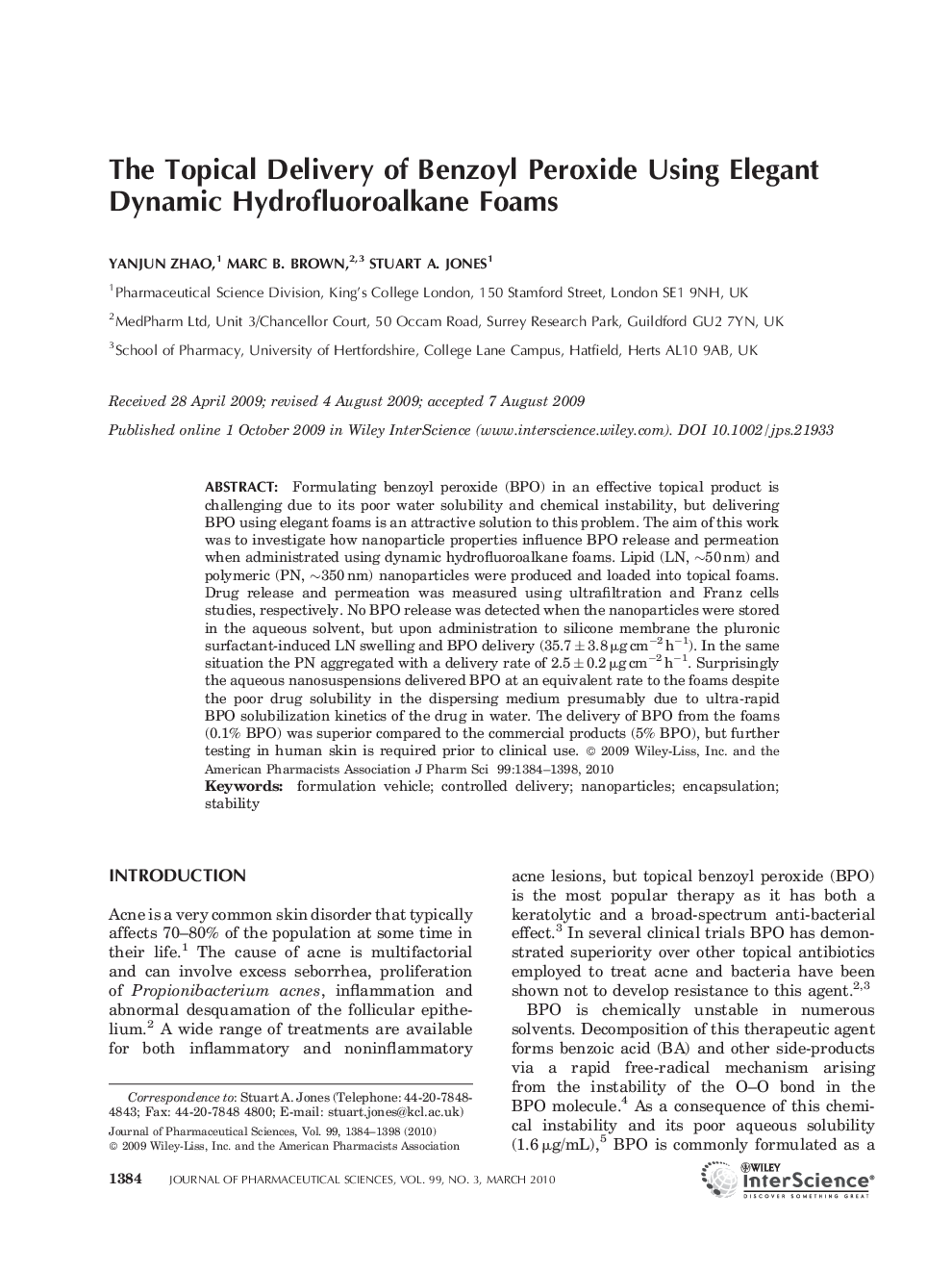| Article ID | Journal | Published Year | Pages | File Type |
|---|---|---|---|---|
| 2486078 | Journal of Pharmaceutical Sciences | 2010 | 15 Pages |
Abstract
Formulating benzoyl peroxide (BPO) in an effective topical product is challenging due to its poor water solubility and chemical instability, but delivering BPO using elegant foams is an attractive solution to this problem. The aim of this work was to investigate how nanoparticle properties influence BPO release and permeation when administrated using dynamic hydrofluoroalkane foams. Lipid (LN, â¼50ânm) and polymeric (PN, â¼350ânm) nanoparticles were produced and loaded into topical foams. Drug release and permeation was measured using ultrafiltration and Franz cells studies, respectively. No BPO release was detected when the nanoparticles were stored in the aqueous solvent, but upon administration to silicone membrane the pluronic surfactantâinduced LN swelling and BPO delivery (35.7â±â3.8âµgâcmâ2âhâ1). In the same situation the PN aggregated with a delivery rate of 2.5â±â0.2âµgâcmâ2âhâ1. Surprisingly the aqueous nanosuspensions delivered BPO at an equivalent rate to the foams despite the poor drug solubility in the dispersing medium presumably due to ultraârapid BPO solubilization kinetics of the drug in water. The delivery of BPO from the foams (0.1% BPO) was superior compared to the commercial products (5% BPO), but further testing in human skin is required prior to clinical use. © 2009 WileyâLiss, Inc. and the American Pharmacists Association J Pharm Sci 99: 1384-1398, 2010
Related Topics
Health Sciences
Pharmacology, Toxicology and Pharmaceutical Science
Drug Discovery
Authors
Yanjun Zhao, Marc B. Brown, Stuart A. Jones,
